See Earth’s hotspots from SPACE: Satellite dubbed the ‘world’s thermometer’ sends back its first pictures – revealing the heat emitted from car parks in Las Vegas and wildfires in Canada
>
A British satellite called the ‘world thermometer’ sent back its first photos from space today.
‘HotSat-1’ captures images in the infrared range to show how much heat is emitted from buildings, parking garages, airports, oil refineries and more.
The new images show the extent of heat emissions in a number of locations, including Las Vegas, Albuquerque in New Mexico and Canada’s Northwest Territories, which have suffered catastrophic wildfires this year.
HotSat-1 is operated by London-based company SatVu, which aims to ‘ensure that every structure on the planet is energy efficient’.
The insights gained could point the finger at huge conglomerates that emit more heat than they should, fueling global warming.
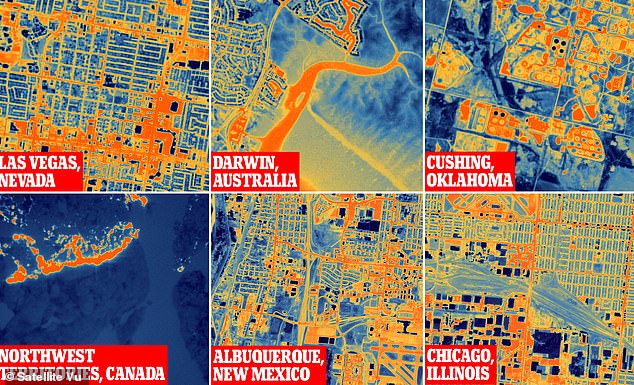
From oil refineries in Oklahoma to wildfires in Canada, the new technology tracks heat emissions worldwide – and could ensure major companies keep their emissions pledges
HotSat-1 was launched in June with help from Elon Musk’s SpaceX from Vandenberg Space Force Base in California.
SatVu now plans to launch additional satellites to form a constellation that will mean more data and faster access to new images for staff on the ground.
Anthony Baker, founder and CEO of SatVu, said there is a “huge difference” between these satellite images and heat images from the ground.
“We may be used to weather images taken by satellite, and there are mapping applications on our phones that can show images of the day,” he said. BBC Radio 4.
‘What we have launched and what the first images show today is a thermal camera that can detect the heat emissions from any building on the planet.
‘This way we can determine where in the world we are wasting energy.’
HotSat-1 looks at public buildings, commercial buildings or industrial sites that “potentially throw away energy that could be recycled and used for communities,” Mr Baker added.
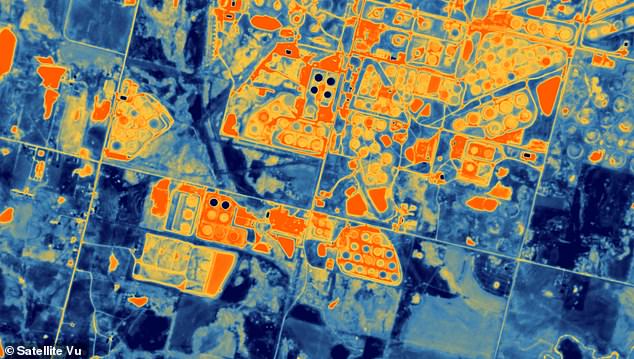

Cushing, Oklahoma is known as the ‘Pipeline Crossroads of the World’ with 39 storage tanks and pipelines capable of moving as much as 1.5 million barrels of crude oil per day. The visible round shapes are the oil storage tanks
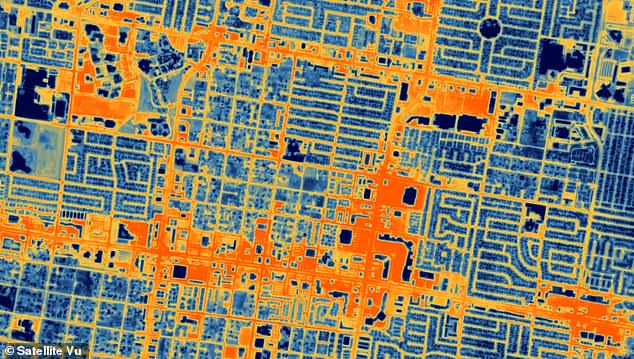

Image shows the thermal insulation effects of large parking lots in Las Vegas, Nevada, located along the city’s roadways
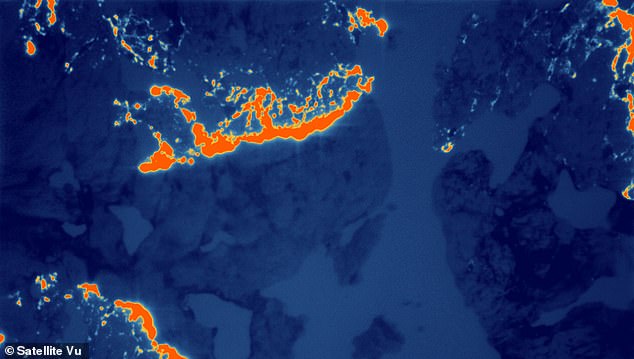

This image shows wildfires about 200 kilometers southwest of Yellowknife in Canada’s Northwest Territories in July this year. The country is experiencing its worst fire season ever
Lost heat is not only expensive – adding millions to the heating bills of poorly insulated households – but is also a cause of global warming.
“We have 28 million homes in Britain, most of which are quite poorly insulated,” Professor Emily Shuckburgh from the University of Cambridge told the BBC.
‘It is very important to be able to identify those buildings with this kind of information, prioritize them for better insulation and then assess their quality.’
HotSat-1 is designed and manufactured in the UK by SatVu in collaboration with Surrey Satellite Technologies (SSTL), based in Guildford.
In the Canadian image from July, active wildfire is vividly depicted in orange, while the smoky aftermath is depicted in a light blue hue.
In the future, HotSat-1 will enable emergency responders and organizations to predict the rate of progression and potential impacts of wildfires.
Unlike previous images typically collected by current satellites, SatVu’s imagery uses high-resolution thermal infrared wavelengths.
This gives much higher resolution of the area not covered by smoke, which is impenetrable at visible wavelengths.
Another shot shows the main line of the Belt Railway of Chicago (BRC), running locomotives with polluting diesel generators.
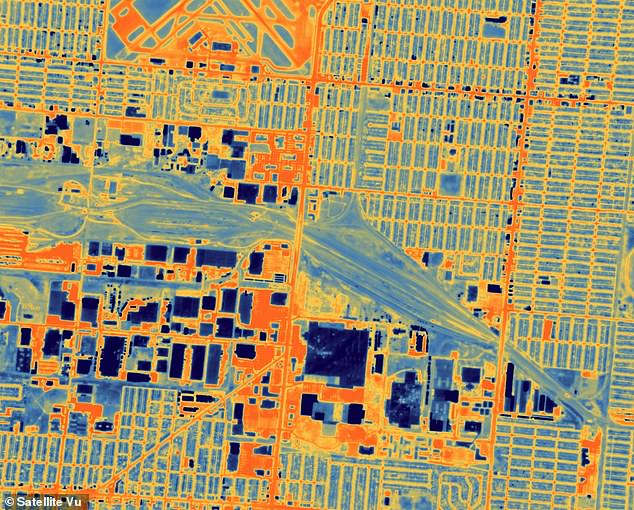

This image captures the main line of the Belt Railway of Chicago (BRC) and the east end of their cleanup year. North American locomotives typically have diesel generators and the heat signatures of individual locomotives are clearly visible on the thermal images
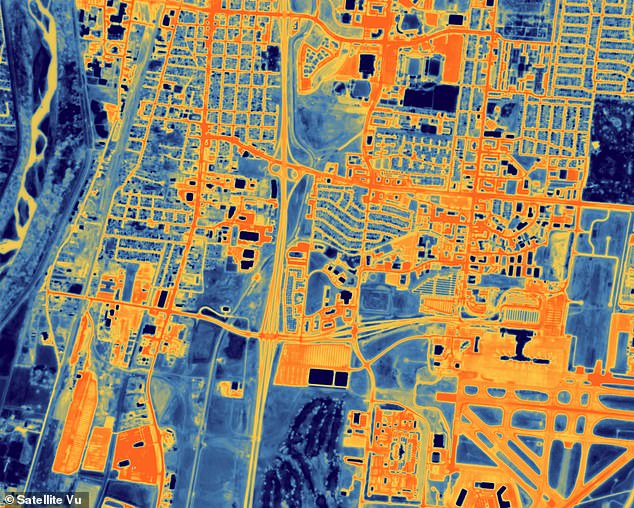

Airport in Albuquerque, New Mexico, with aircraft to the right of the image. A golf course at the bottom of the image is relatively cooler
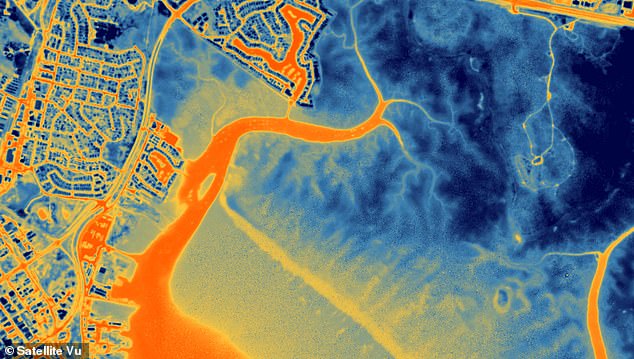

Darwin Australia: The orange area is the sea, rivers and estuary and the darker area at the top is the marina. Water retains its heat very well, making it appear very warm (orange)
SatVu showed off its technology to the Prince of Wales at the Sustainable Ventures event in London earlier this week.
The company describes its mission as capturing “the highest resolution thermal data, from space, for a safer and more sustainable Earth.”
“High-resolution thermal imagery and insights from space are the only way to collect the level of data that enables climate action and intelligence,” it says on its website.
‘We are looking to ensure that every structure on the planet is energy efficient and support the reduction of companies’ carbon footprints.
‘In near real-time we will use infrared technology to monitor the Earth and assess and determine insights into economic activity.
‘This allows companies to make decisions to become more environmentally friendly.’
